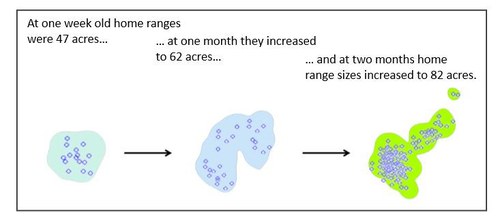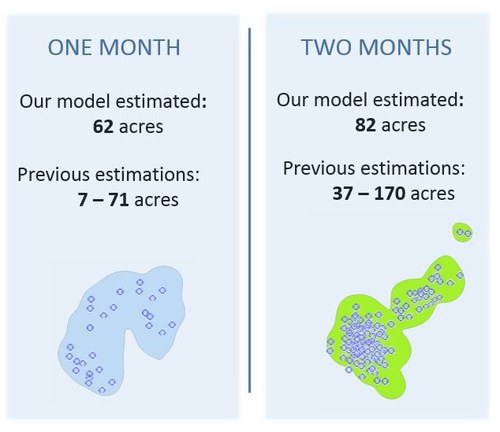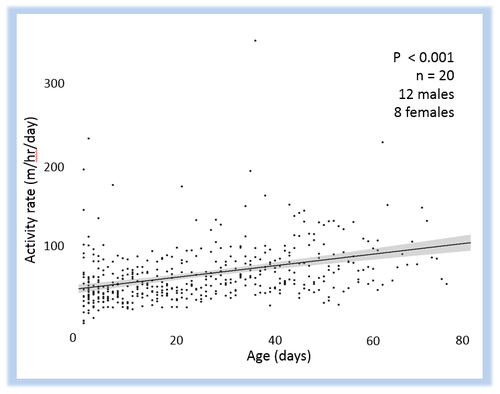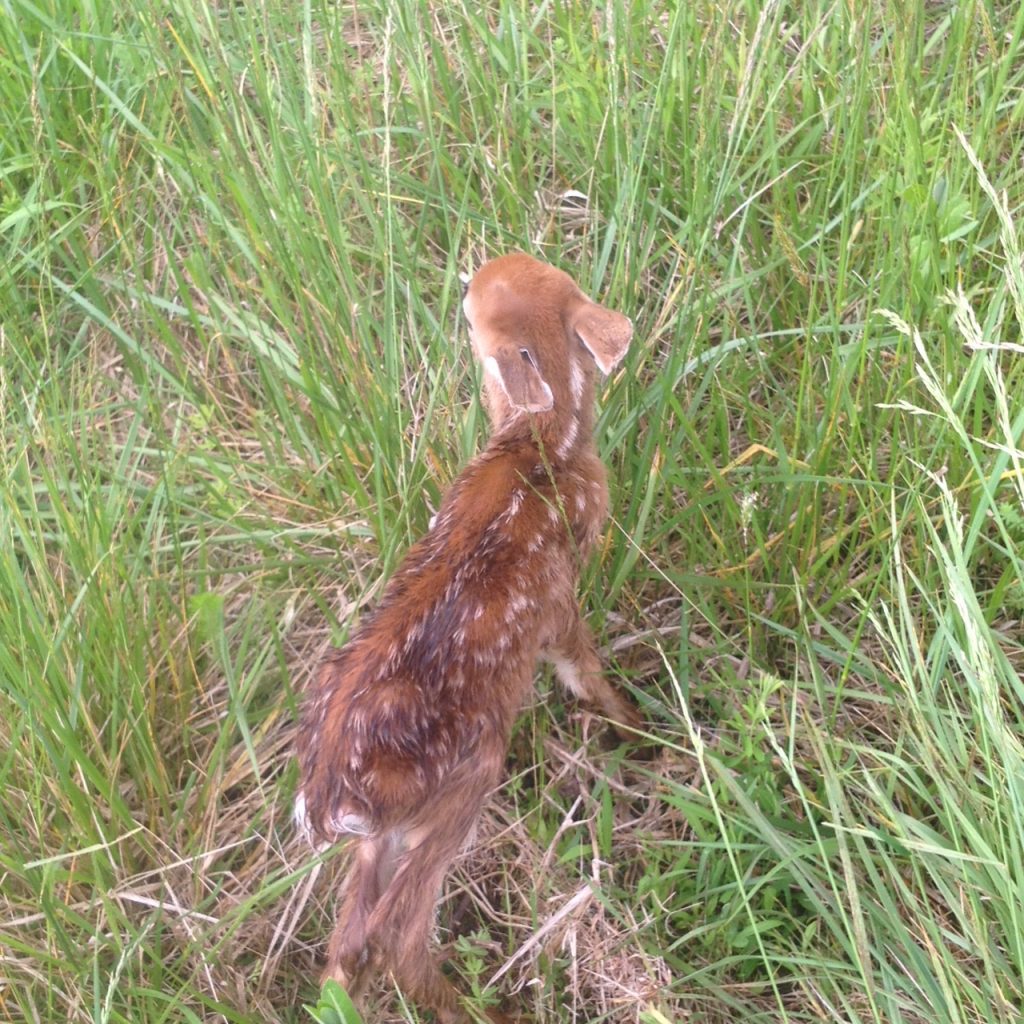Shrinking GPS units have given us a window to the world of animal movements we’ve never had before. Using thousands of locations, we can plot bucks in rut and savvy does during the gun season.
A common question is how much area does a deer use in their life or how big is their home range. In Pennsylvania, the average home range size is about 1 square mile. Of course, there is a large amount of variation among individuals and seasons.
But those are big deer with long legs. What about fawns?
Well, I have GPS positions for 20 fawns! I am most interested in the first few months of life and how activity and home range change as they age. It will probably come as no surprise that as fawns get bigger their home range size gets bigger too!
Home ranges increase about 0.5 acres every two days and start out just over 40 acres!

Fawn home range has been studied in the past. So how do these home ranges compare to studies using tradition location techniques?
Well, not only is this the first study to use GPS locations to track fawns, it is also the first study to ever look at the home range sizes of fawns during the first week of life. This is when some of the highest mortality rates occur! As a result, I can’t compare our results to any other studies.
However, I can compare our home range sizes at one month and two months of age!

Given the limitation of VHF tracking, some estimates are better than others. However, it’s also possible that fawns in wide open fields have different sized home ranges than those in our state forests!
So we can see what area they used. The next question is how active are they over that time period.
Activity can be a double-edged sword to fawn. Those who move more may be more likely to be spotted by a predator and gobbled up. Alternatively, if you are able to move around a lot maybe you can run away faster and avoid being eaten.
Human babies start moving by first crawling and then walking and then running. Fawns develop a bit faster and can run just after birth. It may take human babies a year to move from rolling on the living floor to climbing the stairs, but fawns increase the size of the area they use every day.
If fawns are increasing the area they use every day, they must be moving around more. Studying activity patterns gives insight into how much energy individuals use which can also be related to habitat. Do individuals in different habitats use more or less energy?
We define “Activity rate” as the number of meters a fawn moves per hour per day.

Some studies have suggested that male fawns increase their activity faster and use more energy than female fawns. Exploratory behavior in male fawns may help them prepare for dispersal from their natal range. However, we didn’t see any difference between sexes. Males and females moved similar distances each day.
These little GPS units could open the door for studies to look at the movements of fawns at relatively low cost! Behavior and survival of fawns differs depending on landscape composition.
Does the environment change behavior? Do predators influence them? These little GPS units could really open up that little world.
Database Manager
If you would like to receive email alerts of new blog posts, subscribe here.
And Follow us on Twitter @WTDresearch
